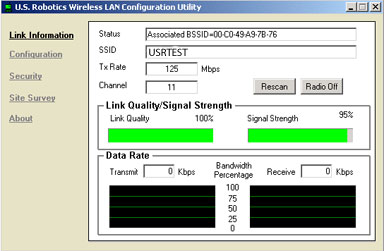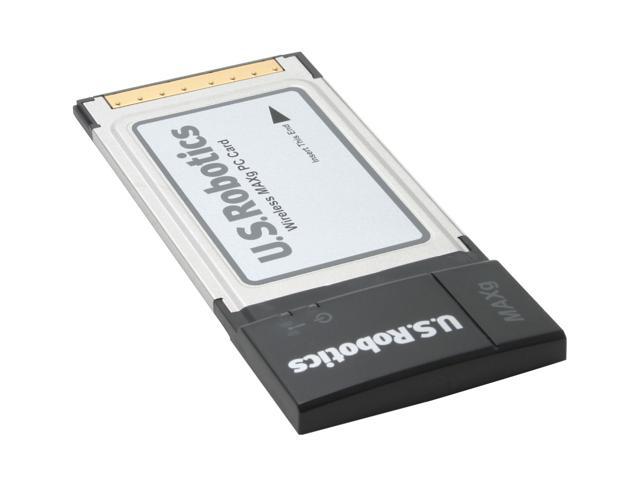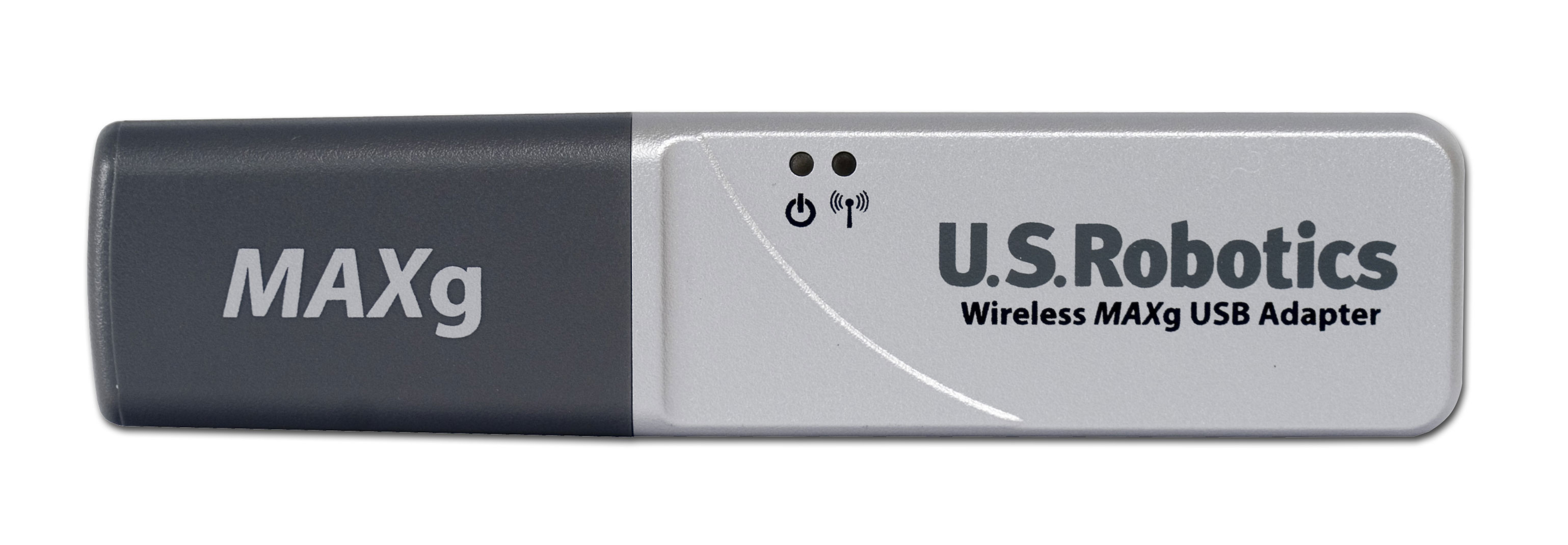| Type | Private |
|---|---|
| Industry | Computer |
| Founded | 1976; 45 years ago |
| Headquarters | Schaumburg, Illinois, U.S. |
| Products | Modems, Wired and Wireless Networking, VoIP |
| Owner | UNICOM Global |
| Website | www.usr.com |
Agreed to buy modem maker U.S. In a stock transaction valued at $6.6 billion, the second-largest high-tech merger ever. 3Com, a Santa Clara, Calif., maker of.

U.S. Robotics Corporation, often called USR, is a company that produces USRobotics computer modems and related products. Its initial marketing was aimed at bulletin board systems, where its high-speed HST protocol made FidoNet transfers much faster, and thus less costly. During the 1990s it became a major consumer brand with its Sportster line. The company had a reputation for high quality and support for the latest communications standards as they emerged, notably in its V.Everything line, released in 1996.
UNICOM Global and IBM Corp. Have agreed to a transaction whereby UNICOM will purchase new IBM z15 Processor and IBM FlashSystem 5100. Enterprise-class platform to power digital transformation, application modernization and hybrid Cloud solutions for Federal and Global 2000 clients. USR Network Taps Network Taps USR4503 Gigabit Copper Aggregation Tap USR4504 10/100/1000 Variable 4 Port Aggregator & Regenerator USR4515LC 10 Gig Multi-Mode Fiber Tap USR4516LC 10 Gig Single-Mode Fiber Tap USR4500-RMK 1U Rack Mount Chassis USB 3.0 Peripherals USR USB 3.0 Peripherals. US Robotics USR8054 routers include a very basic firewall that helps protect your home network form unwanted access from the internet. Since this firewall blocks incoming connections you may need open a port through it for certain games and applications. This process of opening a port is frequently. Buy U S Robotics Network Modem USR5686-ACC. Find quality network modem products at discounted prices.
With the reduced usage of analog or voiceband modems in North America in the early 21st century, USR began branching out into new markets. The company purchased Palm, Inc. for its PilotPDA, but was itself purchased by 3Com soon after. 3Com spun off USR again in 2000, keeping Palm and returning USR to the now much smaller modem market. After 2004 the company is formally known as USR. It is one of the few companies left in the modem market today, and now employs about 125 people worldwide.[1]
History[edit]
USR was founded in 1976 in Chicago, Illinois (and later moved to Skokie, Illinois), by a group of entrepreneurs, including Casey Cowell, who served as CEO for most of the company's history, and Paul Collard who designed modems into the mid-1980s. The company name is a reference to the fictional company U.S. Robots and Mechanical Men which featured prominently in the works of Isaac Asimov. The company has stated it was named as an homage to Asimov because in his science fiction works U.S. Robots eventually became 'the greatest company in the known galaxy',[2] and USR appeared in I, Robot (2004) as the fictional company itself.[3]
USR was one of many companies to offer dial-up modems for personal computers. Prior to the development of standards such as the V.32 family of protocols, USR introduced its own HST (High-Speed Transfer) protocol in 1986, which operated at 9600 bit/s (bits per second). In 1989 HST was expanded to 14.4 kbit/s, 16.8 kbit/s in 1992, and finally to 21 kbit/s and 24 kbit/s.

USR was not the only company making modems with proprietary protocols; Telebit's TrailBlazer series offered speeds up to 19.2 kbit/s, and Hayes also introduced the 9600 bit/s Express 96 (or 'Ping-Pong') system. However, USR became the most successful of the three, due to a marketing scheme that offered large discounts to BBSsysops.
The proprietary nature of HST allowed USR to maintain its market predominance even when off-brand V.32-based modems began selling for less than equivalent HST modems. As the price differential decreased, however, V.32-based modems eventually became a cost-effective alternative to HST. USR countered by creating ever-faster HST protocols, starting with a 16.8 kbit/s mode, and by producing 'dual-standard' modems that were able to communicate with both HST and V.32 modems at high speeds.
During this period, USR differentiated between its high and low-end product lines by supporting only the V.32 modes on its low-end Sportster models, while its high-end Courier models supported V.32, HST, or both in the Courier Dual Standard models. The Sportster used the same motherboard as the Couriers, and on certain 14.4 kbit/s models a sequence of AT commands could be issued to enable the faster 16.8 kbit/s HST mode.[4] The Courier modems remained a favorite in the BBS and emerging Internet service provider world, where they were known to run without problems for extended periods of time (although the initial large-scale deployment of Courier modems in the CompuServe network uncovered a serious bug, which would cause the modems to crash and stop answering calls under high call volumes).
A similar situation emerged a few years later when the 56kbit/s V.90 standard was first being proposed. USR developed its own 56k standard known as X2, while a consortium of other companies introduced its own K56flex. In contrast to the success of HST, neither X2 nor K56flex saw any real market uptake, as it was clear they would soon be followed by V.90 modems. After the introduction of V.90, USR abandoned support for X2. In a further effort to reduce the retail price of its modems, USR also marketed a Winmodem that used software running on the host computer to perform some of the modem functions.
Some models of Courier modems were known for their long-term upgradeability, because they used an upgradeable DSP design. For example, when the Courier V.Everything modem was first released in 1994 under the product label 'Courier V.34 Ready'.,[5] it shipped with only V.FC support, because V.34 had not been released. A free V.34 firmware upgrade[6] was made available later via FidoNet, as well as the Internet. USR then surprised many early Courier V.Everything modem owners with a limited-time free offer of an X2 firmware upgrade, which added 56K speed capability. Finally, USR released a V.90 upgrade that was compatible with X2-upgraded Courier V.Everything modems. Even the 1994 hardware released pre-V.34 was fully V.90-upgradeable without hardware modification.
There was a licensing key needed for some Courier V.Everything V.90 flash upgrades. The firmware could be loaded onto the modem, but it would work in 'degraded' V.34 mode. After paying a fee, and having the modem dial USR, a license key was installed that enabled the V.90 functions.
Commoditization[edit]
USR acquired Palm, Inc. in 1995 and subsequently merged with 3Com Corporation in June 1997.[7] It was then recreated as a spin-off of 3Com in June 2000, assuming 3Com's entire client modem business except for the Palm-related portion, which itself had been spun off with Palm three months earlier. Other portions of the original USR remained part of 3Com as the CommWorks Corporation. USR then quickly built up its device portfolio, including not only traditional dial-up modems, but also wired- and wireless-networking components.
USR was acquired by private equity firm Platinum Equity for an undisclosed amount of cash in 2005, believed to be between US$30 million and US$50 million.[8]
By 2010 the company was focused only on the traditional modem business.
In 2013, USR was acquired by UNICOM Global.[9]
See also[edit]
- IBM Mwave – Combined modem and sound digital signal processor (DSP) card allowing soft upgrades within its hardware limitations.
References[edit]
- ^'USR :: Backgrounder'. www.usr.com. Retrieved 2 May 2017.
- ^'About USR'. USR. Retrieved 14 September 2017.
- ^Hachman, Mark (2004-06-30). 'Update: Management Team Buys Back U.S. Robotics - ExtremeTech'. ExtremeTech. Retrieved 2020-05-02.
- ^'Google Groups'. groups.google.com. Retrieved 2 May 2017.
- ^'Info World: USRobotics Courier V.34 Ready Fax Modem with V.FC and V.32bis'. books.google.com. 11 July 1994. Retrieved 2 May 2017.
- ^'PC Magazine: The First V.34 Modems'. books.google.com. 13 Sep 1994. Retrieved 16 Nov 2017.
- ^'Investors bless 3Com-USR merger'. Retrieved 2 May 2017.
- ^'Buyout Firm Scoops Up Modem Maker U.S. Robotics'. Retrieved 2 May 2017.
- ^'UNICOM Systems acquires U.S. Robotics from Platinum Equity'. support.usr.com. Retrieved 2 May 2017.
External links[edit]
| Wikimedia Commons has media related to U.S. Robotics. |
- Official website of U.S. Robotics Corporation
- Business data for U.S. Robotics Corporation:
| Type | Private |
|---|---|
| Industry | Computer |
| Founded | 1976; 45 years ago |
| Headquarters | Schaumburg, Illinois, U.S. |
| Products | Modems, Wired and Wireless Networking, VoIP |
| Owner | UNICOM Global |
| Website | www.usr.com |
U.S. Robotics Corporation, often called USR, is a company that produces USRobotics computer modems and related products. Its initial marketing was aimed at bulletin board systems, where its high-speed HST protocol made FidoNet transfers much faster, and thus less costly. During the 1990s it became a major consumer brand with its Sportster line. The company had a reputation for high quality and support for the latest communications standards as they emerged, notably in its V.Everything line, released in 1996.
With the reduced usage of analog or voiceband modems in North America in the early 21st century, USR began branching out into new markets. The company purchased Palm, Inc. for its PilotPDA, but was itself purchased by 3Com soon after. 3Com spun off USR again in 2000, keeping Palm and returning USR to the now much smaller modem market. After 2004 the company is formally known as USR. It is one of the few companies left in the modem market today, and now employs about 125 people worldwide.[1]
History[edit]
USR was founded in 1976 in Chicago, Illinois (and later moved to Skokie, Illinois), by a group of entrepreneurs, including Casey Cowell, who served as CEO for most of the company's history, and Paul Collard who designed modems into the mid-1980s. The company name is a reference to the fictional company U.S. Robots and Mechanical Men which featured prominently in the works of Isaac Asimov. The company has stated it was named as an homage to Asimov because in his science fiction works U.S. Robots eventually became 'the greatest company in the known galaxy',[2] and USR appeared in I, Robot (2004) as the fictional company itself.[3]
USR was one of many companies to offer dial-up modems for personal computers. Prior to the development of standards such as the V.32 family of protocols, USR introduced its own HST (High-Speed Transfer) protocol in 1986, which operated at 9600 bit/s (bits per second). In 1989 HST was expanded to 14.4 kbit/s, 16.8 kbit/s in 1992, and finally to 21 kbit/s and 24 kbit/s.
USR was not the only company making modems with proprietary protocols; Telebit's TrailBlazer series offered speeds up to 19.2 kbit/s, and Hayes also introduced the 9600 bit/s Express 96 (or 'Ping-Pong') system. However, USR became the most successful of the three, due to a marketing scheme that offered large discounts to BBSsysops.
The proprietary nature of HST allowed USR to maintain its market predominance even when off-brand V.32-based modems began selling for less than equivalent HST modems. As the price differential decreased, however, V.32-based modems eventually became a cost-effective alternative to HST. USR countered by creating ever-faster HST protocols, starting with a 16.8 kbit/s mode, and by producing 'dual-standard' modems that were able to communicate with both HST and V.32 modems at high speeds.
During this period, USR differentiated between its high and low-end product lines by supporting only the V.32 modes on its low-end Sportster models, while its high-end Courier models supported V.32, HST, or both in the Courier Dual Standard models. The Sportster used the same motherboard as the Couriers, and on certain 14.4 kbit/s models a sequence of AT commands could be issued to enable the faster 16.8 kbit/s HST mode.[4] The Courier modems remained a favorite in the BBS and emerging Internet service provider world, where they were known to run without problems for extended periods of time (although the initial large-scale deployment of Courier modems in the CompuServe network uncovered a serious bug, which would cause the modems to crash and stop answering calls under high call volumes).
U.s.robotics Network & Wireless Cards Driver Download For Windows 10 7
A similar situation emerged a few years later when the 56kbit/s V.90 standard was first being proposed. USR developed its own 56k standard known as X2, while a consortium of other companies introduced its own K56flex. In contrast to the success of HST, neither X2 nor K56flex saw any real market uptake, as it was clear they would soon be followed by V.90 modems. After the introduction of V.90, USR abandoned support for X2. In a further effort to reduce the retail price of its modems, USR also marketed a Winmodem that used software running on the host computer to perform some of the modem functions.
Some models of Courier modems were known for their long-term upgradeability, because they used an upgradeable DSP design. For example, when the Courier V.Everything modem was first released in 1994 under the product label 'Courier V.34 Ready'.,[5] it shipped with only V.FC support, because V.34 had not been released. A free V.34 firmware upgrade[6] was made available later via FidoNet, as well as the Internet. USR then surprised many early Courier V.Everything modem owners with a limited-time free offer of an X2 firmware upgrade, which added 56K speed capability. Finally, USR released a V.90 upgrade that was compatible with X2-upgraded Courier V.Everything modems. Even the 1994 hardware released pre-V.34 was fully V.90-upgradeable without hardware modification.
There was a licensing key needed for some Courier V.Everything V.90 flash upgrades. The firmware could be loaded onto the modem, but it would work in 'degraded' V.34 mode. After paying a fee, and having the modem dial USR, a license key was installed that enabled the V.90 functions.

Commoditization[edit]
USR acquired Palm, Inc. in 1995 and subsequently merged with 3Com Corporation in June 1997.[7] It was then recreated as a spin-off of 3Com in June 2000, assuming 3Com's entire client modem business except for the Palm-related portion, which itself had been spun off with Palm three months earlier. Other portions of the original USR remained part of 3Com as the CommWorks Corporation. USR then quickly built up its device portfolio, including not only traditional dial-up modems, but also wired- and wireless-networking components.
USR was acquired by private equity firm Platinum Equity for an undisclosed amount of cash in 2005, believed to be between US$30 million and US$50 million.[8]
By 2010 the company was focused only on the traditional modem business.
In 2013, USR was acquired by UNICOM Global.[9]
See also[edit]
- IBM Mwave – Combined modem and sound digital signal processor (DSP) card allowing soft upgrades within its hardware limitations.
References[edit]
- ^'USR :: Backgrounder'. www.usr.com. Retrieved 2 May 2017.
- ^'About USR'. USR. Retrieved 14 September 2017.
- ^Hachman, Mark (2004-06-30). 'Update: Management Team Buys Back U.S. Robotics - ExtremeTech'. ExtremeTech. Retrieved 2020-05-02.
- ^'Google Groups'. groups.google.com. Retrieved 2 May 2017.
- ^'Info World: USRobotics Courier V.34 Ready Fax Modem with V.FC and V.32bis'. books.google.com. 11 July 1994. Retrieved 2 May 2017.
- ^'PC Magazine: The First V.34 Modems'. books.google.com. 13 Sep 1994. Retrieved 16 Nov 2017.
- ^'Investors bless 3Com-USR merger'. Retrieved 2 May 2017.
- ^'Buyout Firm Scoops Up Modem Maker U.S. Robotics'. Retrieved 2 May 2017.
- ^'UNICOM Systems acquires U.S. Robotics from Platinum Equity'. support.usr.com. Retrieved 2 May 2017.
External links[edit]
U.s.robotics Network & Wireless Cards Driver Download For Windows 10 64-bit
| Wikimedia Commons has media related to U.S. Robotics. |
- Official website of U.S. Robotics Corporation
- Business data for U.S. Robotics Corporation:
U.s.robotics Network & Wireless Cards Driver Download For Windows 10 32-bit
